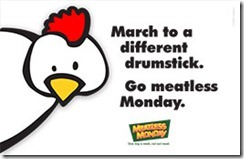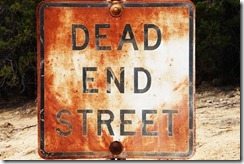 |
| Table salt under magnification (Photo credit: Wikipedia) |
Salt has a bad reputation, most of us are aware that excessive salt (sodium) intake can lead to the development of high blood pressure, but salt plays a vital role in the physiology of our bodies. Sodium is so important to our bodies that we have a specific sensor on our tongues that can detect sodium. Salt is crucial for maintaining every cell in your system, it permeates the fluid between the cells (extracellular fluid), while potassium exists inside the cells in the intracellular fluid. Sodium and potassium need to remain in dynamic balance so nutrients and waste can exchange across cell membranes. In addition to being a component of extracellular fluid, sodium is also a vital component of our blood and lymphatic fluid. In order to digest protein, you need salt since it is necessary for the production of hydrochloric acid, which is a digestive enzyme in the stomach. Your cells actually pump sodium out and potassium in via “sodium-potassium pump”, this pump is found in the membranes of all cells in your body. One of the most important functions of this pump is in preventing the swelling of your cells, if sodium is not pumped out, water will accumulate within the cell causing it to swell and burst. The sodium-potassium pump is also important in maintaining the acid-base balance and in healthy kidney function. Sodium and potassium are required in the proper functioning of our nerves and the contraction of our muscles. Without salt our bodies would cease to function properly.
Refined salt (table salt) is two mineral salts, sodium (Na+) and chloride (Cl-) together with other chemicals like anti-caking agents ( sodium aluminosilicate or alumino-calcium silicate ). These anti-caking agents are sources of aluminum, a toxic metal that has been associated in the development of Alzheimer’s disease. Bleaches are often used in the refining process and more than 60 trace minerals and essential macro-nutrients, except the sodium and chloride, are stripped out. None of these chemicals work with our biochemistry and add additional problems with their use. When salt is isolated from its organic whole (refined) excessive concentrations of sodium and chloride can cause mineral and fluid imbalances in the body and can lead to health problems like hypertension, and anemia.
A low-salt or no salt diet is also not advised since it can lead to:
- High blood pressure
- Accelerated aging, cellular degeneration, biochemical starvation
- Adrenal fatigue
- Heart Attack (valves can tear and lacerate)
- Dehydration (Salt helps the body maintain water needed for the fluid systems)
- Kidney and liver problems
Our bodies need salt, but how much? According to the Sodium Counter (Pocket Books, 1993), the average American’s salt intake is 2-3 teaspoons a day. While this may not sound like much, it provides 4,000-6,000 mg of sodium (About double the FDA’s maximum RDA of 2,400 mg). Salt is so prevalent in processed foods, getting salt out of your diet and controlling your intake isn’t as simple as passing up the salt shaker. Snacks like chips, crackers, and popcorn are obviously salted but so are foods like bread, cereal, and salad dressings. In order to really reduce your salt intake you have to read the labels of the foods you are eating. As a rule of thumb: focus on buying foods that have 140 mg of sodium or less per serving.
Ann Louise Gittleman from her book, Get the Salt Out, 501 Simple Ways to Cut the Salt Out of Any Diet, has these ten tips for removing the unhealthy salt from your diet:
- Avoid processed foods as much as possible. Products that come in packages and cans are designed for long shelf-life and are the #1 source of salt in our diets. Additionally, these processed foods often contain sodium additives and preservatives, sugar, and hydrogenated fats, all of which are linked to common health problems. For your optimal health, your top priority should be removing these refined, processed, fake foods. EAT REAL FOOD!
- Nature designed foods that are perfect for our bodies, low in sodium and filled with nutrients. Fresh plant foods and unprocessed animal foods fit this definition; all others do not. Therefore, choosing foods low in sodium is relatively easy: when in doubt, opt for the more natural choice (ideally organic).
- Use unrefined sea salt instead of common table salt in your salt shaker. The kind of salt you use is just as important as the amount of salt you use. Common table salt is harmful; it does not dissolve in the body and tends to build up. Unrefined sea salt is “good” salt that the body can readily use for the many functions sodium is needed for in our bodies.
- Use only the amount of salt that is right for you. Sensitivity to salt, even the “good” kind, is an individual response. Some of us can tolerate moderate amounts easily while others do better with very little. LISTEN TO YOUR BODY.
- Eliminate or reduce, the amount of salt used in cooking. Salt added during cooking accounts for 45% of the sodium we consume and is not tasted as well as salt added after cooking. Use natural salt at the table (which accounts for only 5% of our sodium intake), but eliminate or reduce salt from your recipes.
- Become a consumer-savvy food detective, seek out products that are low in sodium or have no salt added. An unsalted products substituted for a salted ingredient may reduce your sodium intake by hundreds or thousands or milligrams, in one meal alone.
- To add flavor to your recipes use salt-free seasonings like, garlic, herbs and spices.
- Use naturally salty, but still nutritious, foods like unprocessed cheese and reduced-sodium tamari (in small amounts) to add flavor while cooking.
- Eat at least 5 servings of fruits and veggies each day. Fresh fruits and veggies are high in potassium, which helps to counteract too much salt in the diet.
- Eat for taste and good nutrition, not just taste alone. Our taste for salt has far exceeded our need. Food manufacturers and restaurants frequently take advantage of our taste for salt, making profits off of poor-quality, nutrient deficient but heavily salted foods. Remember: your taste for salt can lesson, but your fundamental requirements for nutrients have to be met each and every day. A diet high in salty, processed foods can simply not meet our nutritional requirements.
There is a lot of information about nutrition and what is the best way to eat, but the single best thing you can do to reduce your sodium intake and eat a more nutritious diet is to eliminate as many processed foods as possible. Foods closest to their natural state are most nutritious. The real food movement is gaining popularity, when people become educated on what the food they are eating is really doing to their health, the decision to eat whole, natural foods seems to be a logical conclusion. If you would like more information on the real food movement click here.
As always if you have questions, leave a comment or send me an email, I am here to help!
Do you have any tips for reducing sodium in the diet, do you have information to add?Leave a comment! The more we share information, the more complete our understanding can be.
References:
Gittleman, A., Get the Salt Out, 501 Simple Ways to Cut the Salt Out of Any Diet, Three River Press, 1996
Jones, A. & Trattler, R., Better Health through Natural Healing, How to Get Well Without Drugs or Surgery (2nd Ed.), Hinkler Books, 2001.
Murray, M. & Pizzorno, J., The Encyclopedia of Healing Foods, Atria Books, 2005.













 (10 votes, average: 3.70 out of 5)
(10 votes, average: 3.70 out of 5) 





















